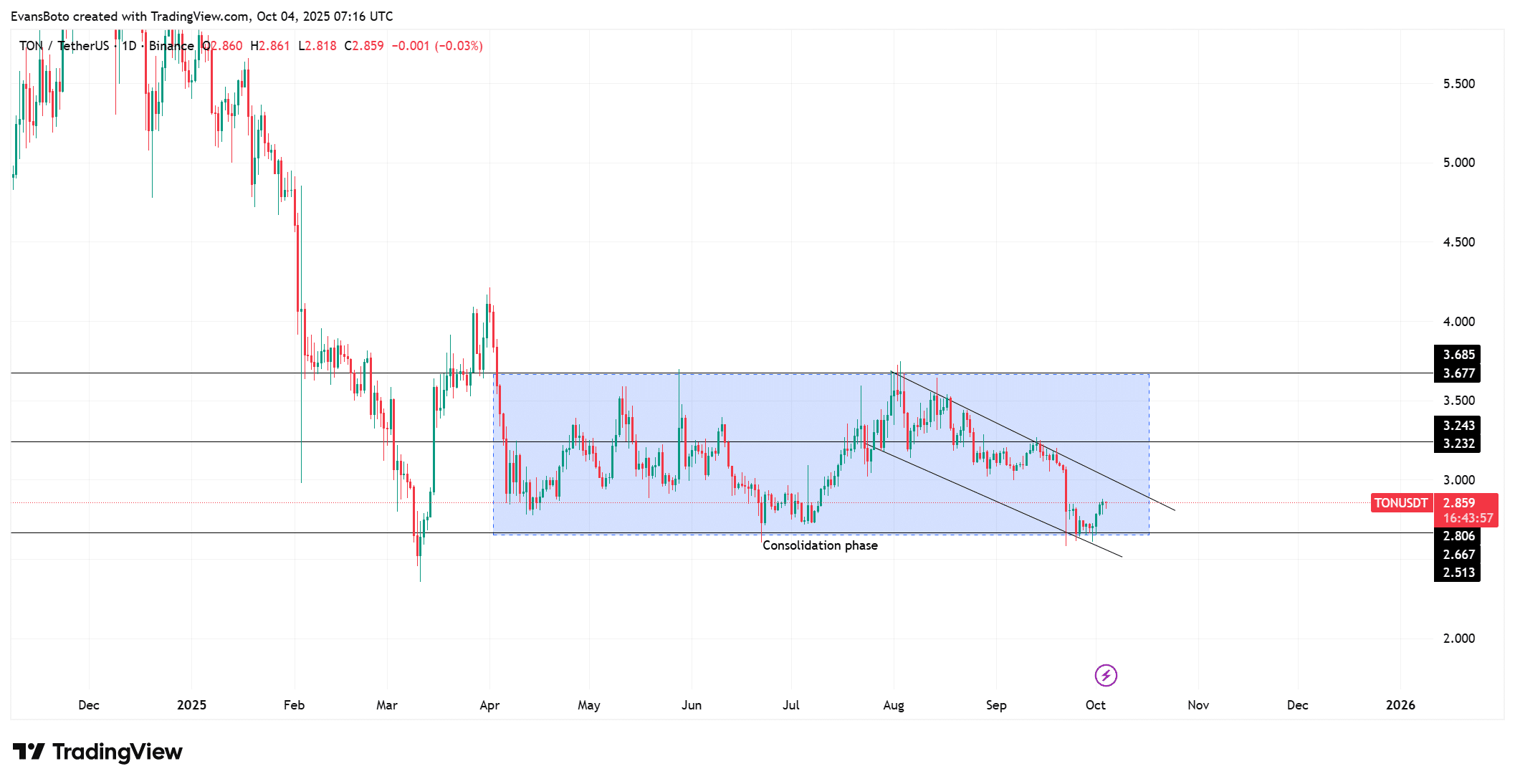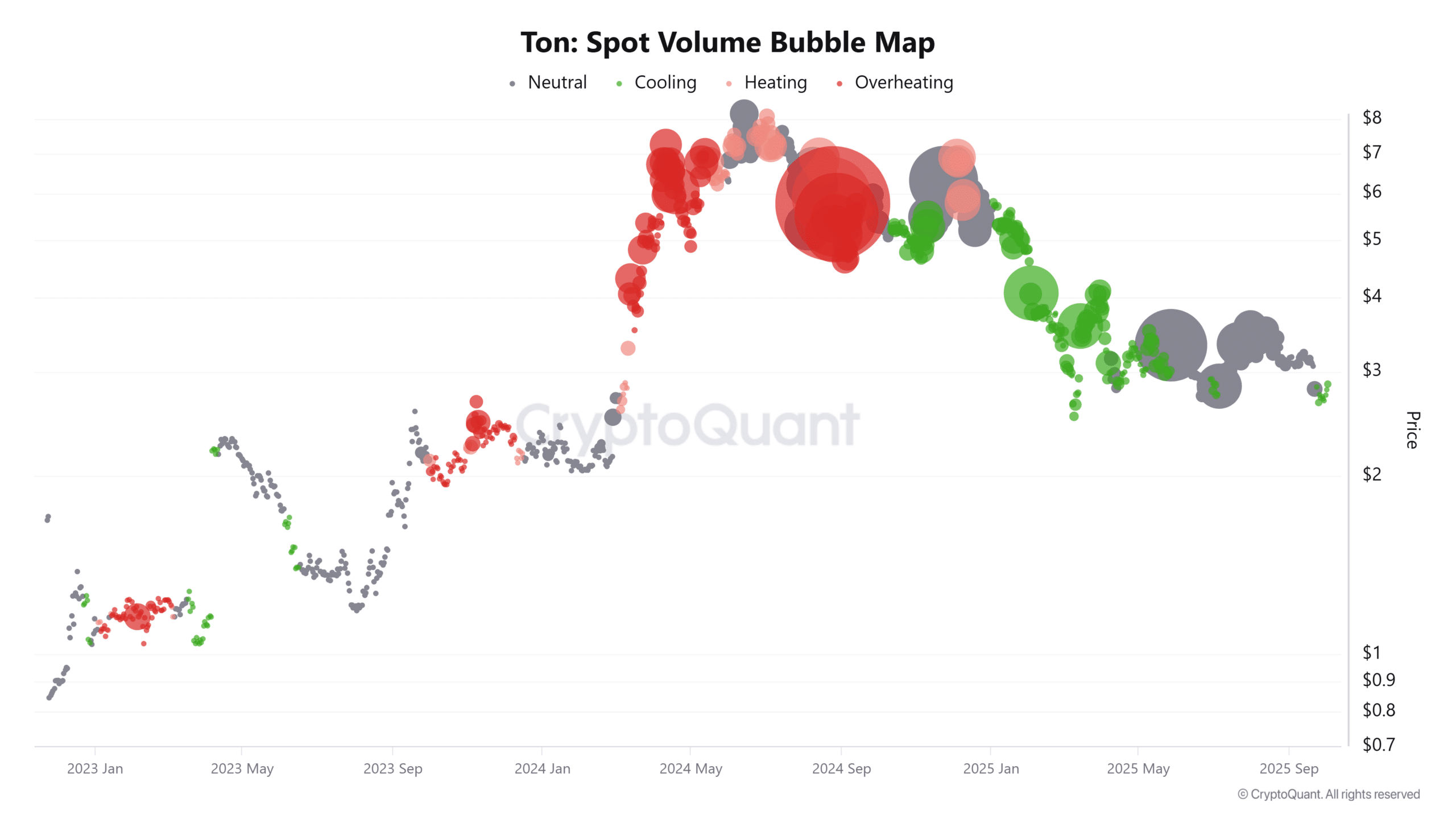TON price faces decisive pressure at the $2 mark: Toncoin must see sustained buyer volume and falling exchange inflows to hold $2; otherwise, persistent selling could push the market toward $1.60–$1.20 within upcoming sessions. Traders should watch taker CVD, spot volumes, and weekly netflows closely.
-
Buyers must reclaim and defend $2 to prevent deeper declines.
-
Persistent exchange inflows ($4.12M weekly) and cooling spot volumes signal continued seller dominance.
-
Strong taker selling on CVD and fading bubbles increase the risk of a drop to $1.60 or $1.20.
TON price: Can Toncoin hold $2? Data-driven analysis of selling pressure, volumes, and inflows — read actionable signals for traders now.
Can TON defend the $2 level against persistent selling pressure?
TON price faces a critical test at $2: buyers must reassert control with clear volume support and declining exchange inflows to prevent a slide to $1.60–$1.20. Current taker CVD and netflow signals favor sellers, so momentum confirmation is essential for a sustainable defense.
How does taker CVD reflect current market bias?
Toncoin’s spot taker CVD chart shows dominant red zones, indicating aggressive taker sells. Short, repeated red spikes suggest sellers are executing market orders more frequently than buyers. Without a sustained shift to green CVD, the bias remains bearish and hinders meaningful recoveries.
TON’s extended consolidation near key support — what does it mean?
TON has traded inside a prolonged channel between $2.50 and $3.68, retesting mid-range levels without conviction. Price indecision points to a balance between weak bulls and persistent bears. If $2.50 collapses, downside momentum may accelerate; holding near $2 supports the case for a gradual rebound.
Buy-side weakness around $2 diminishes the probability of an immediate recovery. Traders should treat the $2 zone as a make-or-break area: a sustained hold can open recovery targets at $3.20–$3.50, while failure increases the chance of reaching $1.60 or $1.20.

Source: TradingView
Do inflows and cooling volumes confirm a bearish market outlook for TON?
Yes. Weekly Netflow data shows steady inflows—most recently around $4.12M—consistent with tokens moving to exchanges for potential liquidation. At the same time, the Spot Volume Bubble map shows shrinking bubbles, signaling declining trading conviction. These combined metrics support a bearish outlook until they diverge.
How should traders interpret cooling spot volumes?
Cooling spot volumes indicate reduced participation. Historically, declining volumes often precede major moves—either accumulation or distribution. For TON, diminished volumes alongside selling inflows suggest distribution, increasing the likelihood of lower prices unless buyer capital returns.

Source: CryptoQuant
How do exchange inflows affect downside risk for TON?
Exchange inflows raise downside risk because they increase sell-side supply. The latest weekly netflow reading (~$4.12M) aligns with weak CVD and fading volumes, reinforcing the seller-controlled narrative. Without a notable shift to outflows, accumulation signals remain absent and rallies are likely to struggle.

Source: CoinGlass
Frequently Asked Questions
What price targets should traders watch if $2 fails?
If $2 fails, the next meaningful targets are $1.60 and then $1.20, driven by increased selling pressure and exchange inflows. Watch for accelerating taker sells and expanding outflow volumes for confirmation of those moves.
How quickly can TON recover if buyers return?
Recovery speed depends on volume intensity: a sustained shift to green taker CVD and measurable outflows from exchanges could push TON toward $3.20–$3.50 over several sessions. Absent strong volume, recoveries are likely to be shallow and short-lived.
Which indicators provide the clearest signals for TON right now?
Primary indicators to watch: taker CVD (aggression), Spot Volume Bubble map (conviction), and weekly exchange netflows (supply/demand balance). Together they reveal whether buyers or sellers control the next directional move.
Key Takeaways
- $2 is TON’s pivotal level: A sustained defense requires renewed buyer volume and reduced exchange inflows.
- Seller dominance on CVD: Persistent red zones and shrinking spot volumes point to distribution, not accumulation.
- Actionable watchlist: Monitor taker CVD, spot volume bubbles, and weekly netflows for early signs of reversal or continued breakdown.
Conclusion
Toncoin (TON) remains in a fragile state around the $2 support; current metrics favor sellers and emphasize the risk of a slide to $1.60–$1.20. Traders should prioritize volume-confirmed signals and exchange flow shifts. COINOTAG will continue tracking taker CVD, spot volumes, and netflows for updates.
